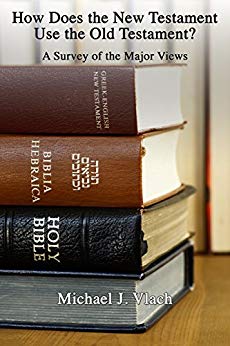A Brief Book Summary from Books At a Glance
By Benjamin Montoya
About the Author
Michael J. Vlach, Ph.D., is Professor of Theology at The Master’s Seminary in Sun Valley, California.
Introduction
How does the NT use the OT? To find an answer to that question among theologians will reveal at least seven distinct positions. What do these positions look like? Who holds them? How do they handle specific test cases? How can we make progress in finding some common ground, or at least a way forward? Consider Vlach’s book for more.
In This Book, You Will Learn:
- The seven views of the NT use of the OT
- Issues that each views face
- Advocates of each view
- Some questions to consider as a way forward
The Larger Contribution of This Book:
This book helpfully summarizes both the position and common criticisms of the various views on the NT use of the OT. Instead of reading several other lengthy books as a starting point to understanding these views, someone can benefit from Vlach’s fair explanation and treatment of these views. Clearly, his theological, hermeneutical, and interpretive views can be seen throughout the book; nevertheless, he has done an excellent job at introducing these concepts for anyone from any theological background.
Table of Contents
Introduction
Chapter 1 Single Meaning-Multiple Application
Chapter 2 Human Meaning plus Hidden Divine Meaning
Chapter 3 Contemporary Judaism/Second Temple Judaism
Chapter 4 Canonical Interpretation
Chapter 5 Inspired Sensus Plenior
Chapter 6 Historical-Exegetical and Theological-Canonical
Chapter 7 New Testament Reinterpretation of the Old Testament
Chapter 8 Test Cases
Chapter 9 Questions that Need Further Study
Book Summary
Chapter 1: Single Meaning-Multiple Application
The first view argues that there is a consistent contextual use of the OT by the NT writers. The full human intent of the original context of the OT is sought after to understand how the NT writer is using it. The chief advocate of this position is Walter C. Kaiser. This view believes that there is only one meaning of a given text. They make a clear distinction between meaning and application. Second, they also believe that the NT authors thought the same way, and, as a result, quoted the OT accordingly. Thus, Kaiser recommends utilizing the grammatical-historical approach to biblical interpretation to see understand the original context. This view would also say that later revelation builds upon earlier revelation, but it does not interpret it.
This view is not without its criticisms. First, some claim that this view does not account adequately for all the NT uses of the OT. Second, this view may make it seem like the OT authors understood more than what is probable. Third, this approach may seem to turn a blind eye away from the first-century Jewish hermeneutical period in which other Jewish methods of interpretation, like pesher and midrash, were used more widely.
Chapter 2: Human Meaning plus Hidden Divine Meaning
This view builds upon the human meaning of the last position and adds a hidden divine meaning for at least some OT passages. They base this position on the dual authorship, human and divine, of the Bible. Thus, there is a “divine hidden fuller meaning that goes beyond what the human author understood.” One of the more well-known adherents of this position is Graeme Goldsworthy. None of the advocates of this position deny the importance of human authorial intent. For them, that is the anchor of the meaning of the text. But, they argue…
[To continue reading this summary, please see below....]The remainder of this article is premium content. Become a member to continue reading.
Already have an account? Sign In
Buy the books

HOW DOES THE NEW TESTAMENT USE THE OLD TESTAMENT?: A SURVEY OF THE MAJOR VIEWS, by Michael J. Vlach